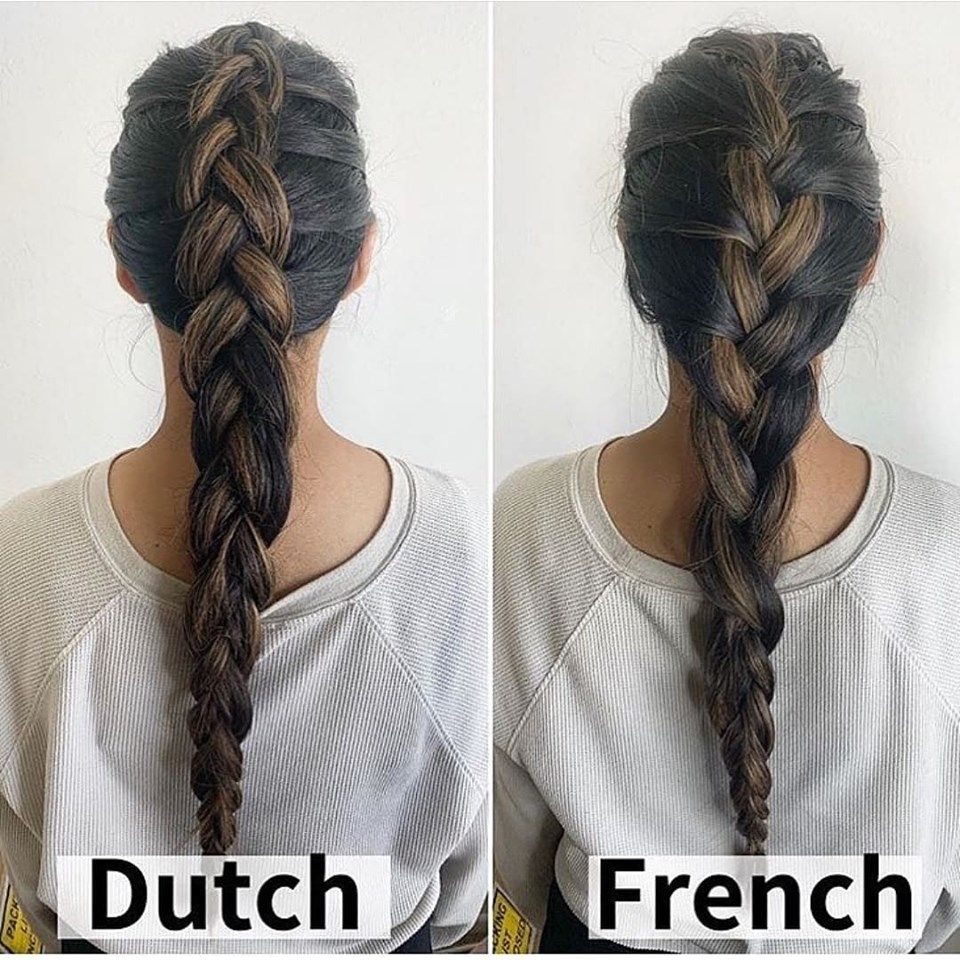Do you need a quick way to keep your hair out of your face on a busy day? Or do you need a glamorous look for a night out? Well, in both cases, a braided hairstyle will come in handy. In that spirit, today we will open up the discussion of Dutch braid versus French braid. Which is the right style? Which one is easier to make? How to make it at home?
Well, do not worry, we will try to answer all of your questions. Braids have reached the peak of popularity in the past several years. The two most traditional braided styles remain the Dutch braid and the French braid. What is the difference between the two? How to master them? If you are new to the braiding game, we have you covered.
At first glance, any advanced braiding technique might seem intimidating. But we will break it down into simple steps for you.
What Is The Difference?

Let’s start with the Dutch braid versus French braid with the difference between the two. A hair expert will tell you that the Dutch braid is just an inverted French braid.
And that might be true. The main difference is that with a French braid you are crossing sections of hair over one another. While with the Dutch braid, you are crossing them underneath. Many people refer to the Dutch braid as a reverse French braid or inside-out braid.
We say that the Dutch braid is a modified version of the French braid. The difference, as we saw, is in the way you weave it. French on top and Dutch on the bottom.
Both of these are simple. But with a proper technique, you can make them look sophisticated. Practice makes it better.
Here is a quick summary of the differences between these two braiding styles:
- The crossing of the strands. French braid is done with strands being crossed over, whereas the Dutch braid does the opposite, crossing strands under
- The volume of the braids. Because of the braiding technique, Dutch braids have more volume. French braids are generally tighter, that is, unless, intentionally teased
- And of course, the style of the braids. Generally speaking, Dutch braids lean on the trendy side and look more modern. French braids provide a more classic look
Now let’s take a look into each braiding technique more deeply.
What Is The French Braid?
Also known as the timeless French braid, it is done with both a single and a double braid. Commonly, it starts from the crown down to the nape. French braid is different than a regular braid as it involves weaving the hair in small sections within three main strands.
The technique gives your hair a waterfall-like effect. The classic French braid involves all the hair at the bottom held together by an elastic.
But you can also do only half of your hair and show off its length. You can make the French braid as tight or as loose as you want. This makes it quite a versatile hairstyle and customizable style.
How To Make It?

- Begin by separating sections of hair into three smaller sections near the crown of your head
- Follow this pattern: left strand over the middle strand, right strand over the middle strand, and repeat
- Before you cross the next strand over, add another piece of hair from each respective side of the braid
- Continue until you reach the nape of your neck. At this point, finish the braid as you would any classic three-strand braid
- If you want a neater look, try to stay consistent with the amount of hair you add into the braid
Pros And Cons Of French Braid
There are tons of advantages to trying French braiding style. Here are the pros and cons.
Pros:
- Easy and timeless way to look chic and trendy
- It is low fuss and low maintenance
- Great for keeping most of your hair in place
- Versatile hairstyle, you can look great in any occasion
- It is basically two hairstyles in one
Cons:
- Takes practice to braid
- Can look unruly, it highlights baby hairs and needs some practice to be done
- Lacks volume on its own
What is Dutch Braid?
Now let’s move to the other part of the Dutch braid versus French braid hairstyle. You can use the Dutch braid individually or try the double Dutch braid. The method is the same, but it looks slightly different. For example, the doubles form the famous box braids.
Unlike the French braid, this one doesn’t look like a flowing waterfall down your neck. Instead, it looks similar to a floating braid with tightly woven sections of hair underneath.
Compared to the French braid, it looks harder, but you can do it as well.
How To Make It?

- Separate your hair into three sections near the crown of your head
- Follow this pattern: left strand under the middle strand, right strand under the middle strand, and repeat
- Add more strands of hair from each side as you go and finish as you would a French
- Continue until the nape of your neck and tie off the ends of your hair
- If you want pigtails or double braid, create a center part and section off one side of hair before focusing the braiding technique on the other. After that, repeat on the opposite side
Pros And Cons
Similar to the French braid, the Dutch braiding one has its own perks and disadvantages. Let’s see them.
Pros:
- Spices up your hairstyle
- Gives your hairstyle a 3D effect
- Adds volume even if you have a shorter hair length
- Adds intrigue to your hair
- Improves your braiding skillset
- Adds an element of effortless chic to your hairstyle
- Leaves you with bouncy waves when untangled

Cons:
- It is easier for hair strands to fall off and stray
- Tends to become messy over time if you do not redo it
- Physical activities might cause it to be unraveled in some places
- There is a learning curve, as it takes time to master the practice
What Are The Similarities Between The Two?
We talked about the differences between Dutch braid vs French braid and how to make each of them. But let’s finish off the article by talking about the similarities. There are key differences, but there are also quite a lot of similarities as well. Here are those:
- Both begin at the crown of the head instead of pigtails that start at the nape
- Both of these styles pick up hair at the other side before crossing it under or over to secure it
- Versatility, both hairstyles can be worn virtually anywhere. Just like a bun, they are similar hairstyles for an everyday look or for a classic look
Also checkout:
- Knotless Braids VS Box Braids – Which One Suits You More?
